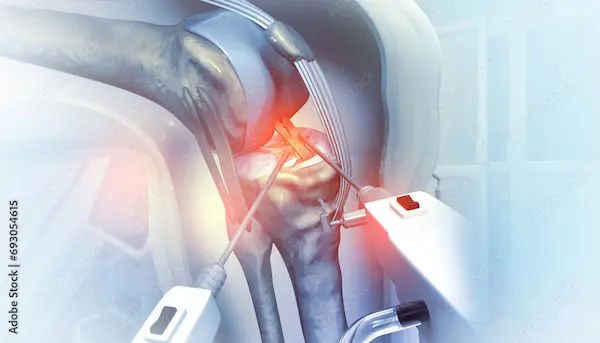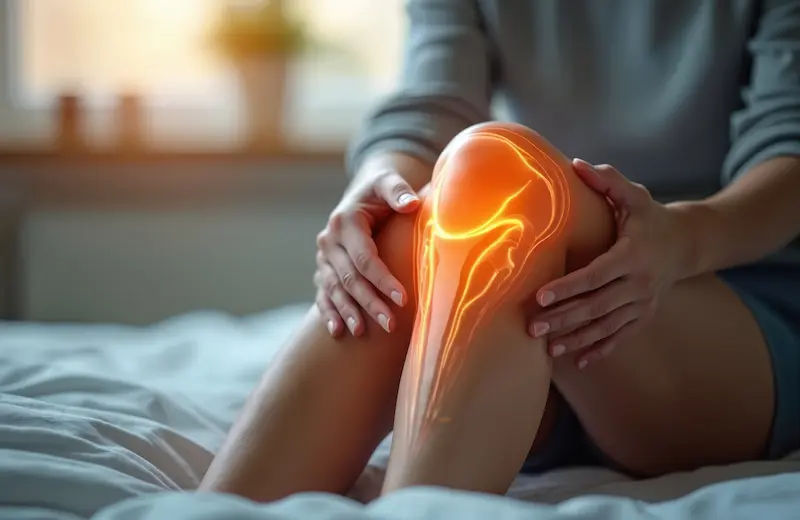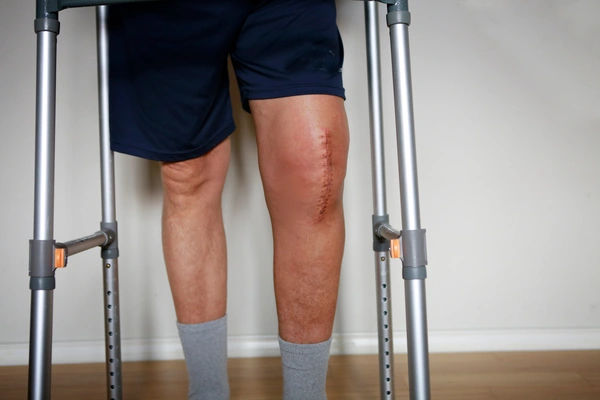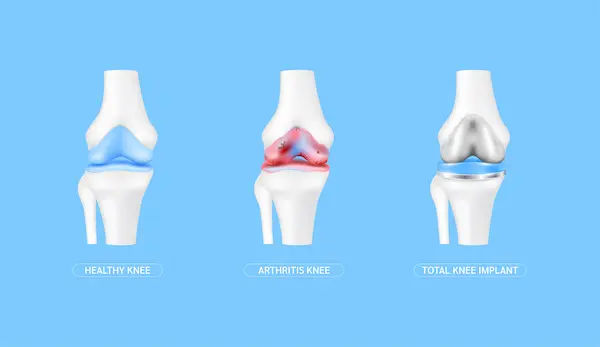Your Guide to Modern Hip, Knee, and Shoulder Arthroscopy
Explore your complete guide to modern hip, knee, and shoulder arthroscopy. Learn how minimally invasive techniques help diagnose, treat, and speed up recovery for joint conditions with less pain and downtime.

Written by Dr. Vasanthasree Nair
Reviewed by Dr. Shaik Abdul Kalam MD (Physician)
Last updated on 8th Oct, 2025
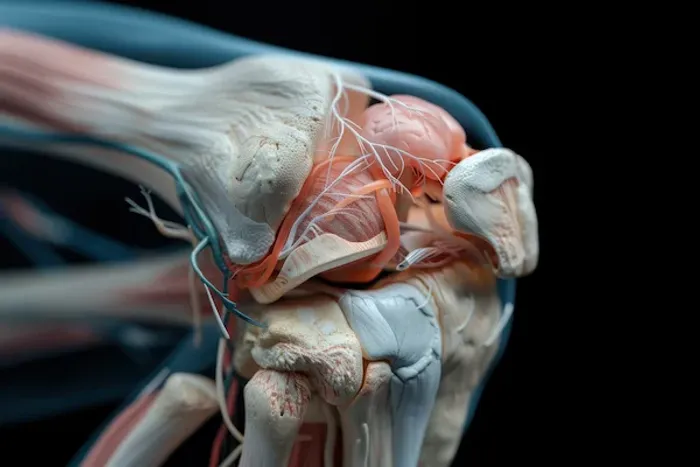
Are you living with persistent joint pain that limits your daily activities? The thought of surgery can be daunting, often conjuring images of large incisions and long, painful recoveries. But what if there was a way to diagnose and treat problems within your hip, knee, and shoulder with minimal disruption to your life? Enter arthroscopy – a revolutionary surgical technique that has transformed orthopedic care. This "keyhole" approach allows surgeons to see, diagnose, and treat joint problems through incisions no larger than a buttonhole. In this comprehensive guide, we will demystify modern hip, knee, and shoulder arthroscopy, exploring the common conditions it treats, the patient journey from consultation to recovery, and the significant benefits it offers over traditional open surgery. Whether you're an athlete dealing with a sports injury or someone seeking relief from chronic wear-and-tear, understanding these advanced treatment options is the first step toward reclaiming your mobility.
What is Arthroscopy? The "Keyhole" Revolution in Orthopedics
Arthroscopy has fundamentally changed how orthopedic surgeons approach problems within the joints. Unlike open surgery, which requires a large incision to fully expose the joint, arthroscopy is a minimally invasive procedure.
The Core Principle: Seeing and Repairing Through Tiny Incisions
The term "arthroscopy" comes from the Greek words "arthro" (joint) and "skopein" (to look). The procedure involves inserting a tiny camera, called an arthroscope, into the joint through a small incision. This camera projects high-definition images of the joint's interior onto a video monitor, giving the surgeon a clear, magnified view. This is a significant advantage over X-rays or MRIs, as it allows for a direct visual assessment of the cartilage, ligaments, and other structures. Through other small incisions, the surgeon can then insert specialised, pencil-thin instruments to perform the necessary repairs, such as trimming torn cartilage, shaving bone spurs, or reconstructing ligaments.
Arthroscopy vs. Open Surgery: A Clear Comparison
The differences between these two approaches are substantial. Because arthroscopic surgery is less invasive, it typically results in:
Less post-operative pain
Lower risk of infection
Minimal scarring
Shorter hospital stays (often outpatient
Faster recovery times
While open surgery is still necessary for certain complex joint replacements or major reconstructions, arthroscopy is now the gold standard for treating a wide range of common joint conditions affecting the hip, knee, and shoulder.
Is Arthroscopy Right for You? Common Conditions Treated
Arthroscopy serves two primary purposes: diagnosis and treatment. It is often recommended when non-surgical treatments like rest, physical therapy, medications, or injections have failed to provide adequate relief.
Knee Arthroscopy: Restoring Stability and Easing Pain
The knee is the most common joint treated with arthroscopy. Its weight-bearing nature makes it susceptible to injury and degeneration.
Meniscal Tears: The Most Common Reason
The meniscus is a C-shaped piece of cartilage that acts as a shock absorber between your thigh bone and shin bone. A sudden twist or age-related degeneration can cause a tear, leading to pain, swelling, and a "locking" sensation. Arthroscopic surgery allows surgeons to either trim away the torn piece or, in some cases, repair it, which is crucial for long-term joint health.
ACL Reconstruction: Getting Athletes Back in the Game
The anterior cruciate ligament (ACL) is critical for knee stability. A torn ACL is a common sports injury. Arthroscopic surgery for ACL reconstruction involves replacing the torn ligament with a graft. The arthroscope guides the surgeon with precision, resulting in a less invasive procedure and a more predictable recovery time for knee scope procedures.
Addressing Cartilage Damage and Inflammation
Arthroscopy can also be used to smooth roughened cartilage (chondroplasty) or remove inflamed synovial tissue (synovectomy), which is common in conditions like rheumatoid arthritis.
Consult Top Specialists Here
Shoulder Arthroscopy: Fixing the Body's Most Mobile Joint
The shoulder's incredible range of motion comes at the cost of stability, making it prone to specific problems.
Rotator Cuff Repair: Mending the Shoulder's Support System
The rotator cuff is a group of muscles and tendons that stabilise the shoulder. Tears can cause significant pain and weakness. Arthroscopic surgery for rotator cuff repair is highly effective, allowing surgeons to reattach the tendon to the bone using small anchors, all through tiny incisions.
Impingement Syndrome: Creating More Space
This occurs when shoulder tendons are pinched during arm movement. Arthroscopy can be used to remove bone spurs or inflamed tissue, creating more space and relieving pain.
Recurrent Dislocations: Stabilising the Joint
For a shoulder that dislocates repeatedly, arthroscopic stabilisation can tighten stretched ligaments and repair torn tissues, significantly reducing the risk of future dislocations.
Hip Arthroscopy: A Frontier in Relieving Unexplained Hip Pain
Hip arthroscopy is a more recent advancement but has become vital for treating conditions that were previously difficult to diagnose and manage.
Femoroacetabular Impingement (FAI): A Major Cause
FAI occurs when there is an abnormal shape to the hip bones, causing them to rub against each other, damaging the cartilage. This is a leading cause of hip pain in young adults. Arthroscopy allows surgeons to reshape the bones, alleviating the impingement. The FAI hip surgery success rate is generally high, with most patients experiencing significant pain relief and improved function.
Labral Tears: Repairing the Hip's Seal
The labrum is a ring of cartilage that lines the hip socket. A tear can cause deep groin pain and a catching sensation. Arthroscopic hip labral tear treatment involves repairing or debriding the torn tissue, which can dramatically improve symptoms.
The Patient's Journey: From Consultation to Full Recovery
Step 1: Accurate Diagnosis - The Role of Physical Exams and Scans
The journey begins with a thorough evaluation by an orthopaedic specialist. They will take a detailed history, perform a physical exam to assess range of motion and stability, and likely order imaging tests like X-rays or an MRI. If your condition does not improve after trying conservative methods, consulting a doctor online with Apollo24|7 for an initial evaluation can be a convenient first step to determine if a physical visit to a specialist is needed.
Step 2: The Arthroscopic Procedure - A Step-by-Step Walkthrough
On the day of surgery, you will typically receive regional or general anaesthesia. The surgeon will make small incisions around the joint, inject a sterile fluid to expand it for better visibility, and then insert the arthroscope and instruments. The procedure can last from 30 minutes to over two hours, depending on its complexity. Most outpatient joint surgery procedures like these allow you to go home the same day.
Step 3: The Critical Recovery and Rehabilitation Phase
Recovery is a process. While the incisions are small, the internal healing is what takes time. You will likely need to use crutches or a sling for a period. The most crucial element of recovery is physical therapy, which is essential for restoring strength, flexibility, and range of motion. Adhering to your rehab program is the single biggest factor in determining a successful outcome.
The Advantages of Choosing Arthroscopy
The benefits of minimally invasive joint surgery are compelling. Beyond the obvious cosmetic advantage of smaller scars, patients experience:
Significantly less tissue damage: Muscles and tendons are pushed aside rather than cut.
Reduced pain: This leads to a lower need for strong pain medications post-operatively.
Quicker functional recovery: Patients can often return to desk jobs and light activities within a week or two.
High accuracy: The magnified view allows for extremely precise surgical repairs.
Understanding the Risks and Realistic Expectations
While arthroscopy is very safe, no surgery is without risk. Potential complications, though rare, include infection, blood clots, nerve or blood vessel damage, and stiffness. It is also vital to have realistic expectations. Arthroscopy is excellent for relieving mechanical symptoms like catching or locking, and for repairing specific structures. However, it cannot reverse widespread arthritis or regenerate lost cartilage. A thorough discussion with your surgeon about the likely outcomes for your specific condition is essential.
Conclusion
Modern arthroscopy represents a significant leap forward in orthopaedic care, offering hope and effective treatment for those suffering from debilitating joint conditions. By enabling precise repairs through tiny incisions, this technique minimises the physical and emotional toll of surgery, paving the way for a quicker return to an active, pain-free life. Whether your goal is to walk without a limp, throw a ball without pain, or simply sleep through the night, understanding the possibilities of hip, knee, and shoulder arthroscopy empowers you to have an informed conversation with your healthcare provider. If you've been putting off addressing your joint pain due to fear of surgery, it may be time to explore whether this minimally invasive option is right for you. Take the first step by seeking expert advice to understand your specific condition and the potential treatment paths available.
Consult Top Specialists Here
Consult Top Specialists Here
Dr. Anil Sharma
Orthopaedician
42 Years • MBBS, MS Orthopedics
New Delhi
AAKASH MEDSQUARE, New Delhi

Dr. Anil Pradeep Jadhav
Orthopaedician
23 Years • MBBS MS (Ortho)
Nashik
Apollo Hospitals Nashik, Nashik
(25+ Patients)

Dr. Manoj Dinkar
Orthopaedician
15 Years • MBBS, Dip (Orthopaedics)
New Delhi
THE DOCTORS NESST, New Delhi

Dr. Pradeep Lucas
Orthopaedician
7 Years • MBBS, Diploma in Orthopaedics, Fellowship in DFSI
Bengaluru
Revival Multispeciality Clinic, Bengaluru

Dr. Mriganka Ghosh
Orthopaedician
11 Years • MD (Physician), DNB (Orthopaedics)
Howrah
Dr Mriganka Mouli Ghosh, Howrah
More articles from Total Knee Replacement
Frequently Asked Questions
1. How long does it take to recover from arthroscopic knee surgery?
Recovery varies by procedure. For a simple meniscectomy, you might be walking normally in a few days to a week, with full recovery in 4-6 weeks. For an ACL reconstruction, it can take 6-9 months or more to return to sports. Your surgeon and physical therapist will provide a personalized timeline.
2. Is arthroscopy painful?
You will be under anesthesia during the procedure and feel no pain. Post-operatively, there will be some pain and swelling, but it is generally much less severe than with open surgery. Pain is managed effectively with medication.
3. What are the alternatives to arthroscopic surgery?
Alternatives include conservative management (rest, ice, physical therapy, anti-inflammatory medications, corticosteroid injections). For advanced arthritis, joint replacement surgery may be a more appropriate option than arthroscopy.
4. Can arthritis be treated with arthroscopy?
Arthroscopy can help manage symptoms of early arthritis by removing loose fragments of cartilage or bone spurs and washing out inflammatory chemicals (a process called lavage). However, it does not cure arthritis and is not recommended for advanced, bone-on-bone arthritis.
5. Are there any long-term limitations after a successful arthroscopy?
For most common procedures, once fully recovered, there are no long-term limitations. In fact, the goal is to restore full function. However, after certain repairs (like a meniscal repair), high-impact activities may need to be moderated to protect the healing tissue and the long-term health of the joint.
